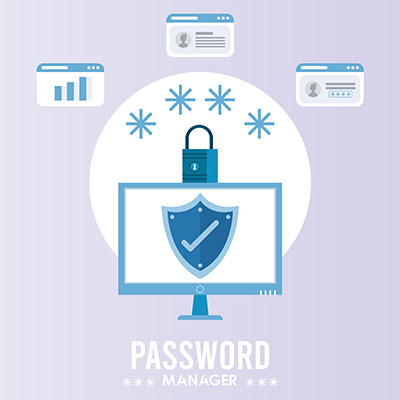FRS Pros Blog
Businesses cannot afford to grow complacent with their network security, as it could make a significant difference between falling prey to an attack and remaining secure. The process of securing a network must be looked at holistically, from top to bottom. This idea of enterprise security is not new, but even a small business needs to keep it in mind, and these solutions are more accessible than you might think.
One major aspect of your business’ security is how well your team is trained to preserve it. Let’s go over some of the aspects that you need to be sure you address as you educate your team.
Sustainability is a hot topic nowadays, from how we conduct ourselves in our personal lives to how businesses go about their respective business. If this is something that you want to promote in your business, we figured that the day before Earth Day was as good a day as any to share some of the ways you can do so.
We’ve been spending the past few weeks examining productivity and how to optimize it, and today, we felt it was necessary to address the issues that could throw the proverbial wrench into the works.
Don’t worry, though, we’re also going to touch on how you can avoid and/or mitigate the issues that might threaten your productivity.
One of the reasons that information technology keeps changing is for the sake of the user and their convenience using it. However, if this convenience comes at the sacrifice of your business’ cybersecurity, it just isn’t worth it. This is the crux of why we always recommend that any organization seeking to use password management should invest in a reputable password management software, rather than the built-in capabilities of modern browsers.
Recently, we talked about productivity, and how it can be defined. We wanted to continue our deep dive into the concept of productivity with an examination of the different ways that you can measure your own.
So, how can you keep track of your productivity?
If you frequently use your desktop to store icons and files, and if you’re like most people who do this, you probably have a cluttered desktop that is difficult to manage. While you can and should take time to clean it up from time to time, one quick way you can do so is by adjusting the size of the icons found on your desktop.
Your Google Calendar is an important part of your productivity practices, but with the help of some additional calendars, you can make managing daily tasks easier than ever. Let’s consider how you can use multiple Google Calendars to be more productive, as well as how you can get them set up.
Productivity has been, is now, and likely will forever be heralded as one of the preeminent goals for any business. As such, it makes sense to understand as much as we can about it. To do so, we’ll be examining a different aspect of productivity for the next few weeks.
First up: what is productivity, in the first place?
Do you have a file or folder on your PC that you always seem to access, yet you have to dig through countless folders or files in your organizational hierarchy to find it? Windows makes it simple to add a new shortcut to your PC. Here’s how you can make a shortcut to a file, folder, or program on your Windows computer.
Back in 1995, the Association of Records Managers and Administrators were in the midst of campaigning for the renewal of the Paperwork Reduction Act. As a part of their efforts, they created National Records and Information Management Day. Over the years since, it has expanded into a week, and then into an entire month, for businesses around the world to consider their record-keeping practices.
Technology fatigue is the mental grinding that comes with the overwhelming use of technology in our lives. Many people in the workforce haven’t had to use technology as much as they do today and the ever-growing demand for technology in business creates problems for employees (and therefore businesses). This week, we thought we’d discuss the truth behind technology fatigue and how individuals can do a better job of not getting burnt out from tech.
Cyberattacks are a serious problem that all businesses face in some form or another, but there are small, everyday tasks you can do to ensure that they impact your organization as minimally as possible. It takes intention and effort to protect your business and its infrastructure, but that doesn’t mean that it has to be hard. Here are three simple ways you can keep your infrastructure secure.
Meetings are a common hold-up for getting things done in the office, an idea that is certainly not unfounded. Research supports the premise that meetings impact productivity. Let’s consider what the numbers say and how you can work to ensure meetings don’t influence your company’s productivity in a negative way.
The thing about technology is that, regardless of how miraculous or otherworldly it may seem upon its introduction, it can quickly become so very familiar to us. Hard as it may seem to believe, someday (maybe even soon), things like ChatGPT and other bleeding-edge technologies will seem typical, perhaps even humdrum.
If you’re looking to maximize your productivity, then having the web-based resources you browse to everyday is a must. You can take this idea one step further by assigning a shortcut icon to a specific web page you frequent. Let’s discuss the process for how you can do this.
The increase in wearable technology that you see coming into your business has substantially increased over the past couple of years. People are doing a better job of tracking their health and using wearable technology to improve their work lives. This creates a problem for the business because every single device brought onto a network is a potential threat and threats have to be managed. Let’s take a look at how people are using wearable technology and what you can do in response to this trend.
Did you know that World Backup Day is in just a few short weeks? While it is an important occasion for businesses to recognize, data backup should really be something you think about all the time. This is because your backup is an integral part of the backup and disaster recovery portion of your overall business continuity.
No one can tell when a disaster is going to hit your business or what form that disaster is going to take. The cause could be a storm, human error, or some freak occurrence that nobody could have seen coming. In order to get back up and running after one of these incidents a company needs to have a strong business continuity strategy. An essential part of this strategy is knowing how to recover data depending on the way it’s lost. Getting data back and working for your company is the only way to stave off ruin, so let’s look at data recovery strategies that can literally save your business.





















